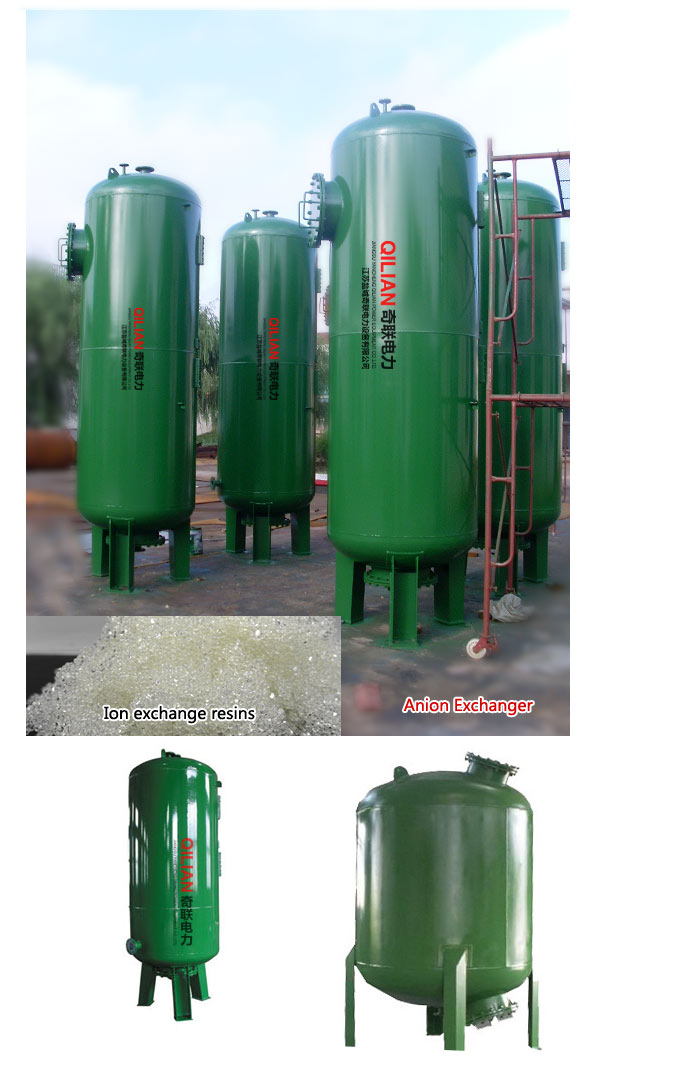The shell of anion exchange exchanger (column), or sodium ion exchanger, is usually made from steel-lined rubber.
Anion exchanger refers to a system where water flows through an anion bed of anion exchange resins in hydroxylic form. The hydroxylic form anion bed is used to remove anions from the water. Mineral salts can be generally removed from the water via the anion exchanger. To achieve better desalination effect, anion bed usually contains strong base anion exchange resins.
Anion exchanger is mainly applicable to boilers, thermal power plants, chemical, textile, pharmaceutical, biological, electronics, and atomic energy industry, pure water pre-treatment, industrial water softening, and deionized water preparation, as well as decolorization and purification of foods and drugs, recycling of precious metals and chemical raw materials, and electroplating wastewater treatment, etc.
Four Basic Processes of Anion Exchanger Regeneration
1. Backwashing: The purpose of backwashing is to remove the suspended impurities from the compact layer. When the anion/cation exchanger is set after the reverse osmosis system, its inlet water will be very clean, so backwashing is not necessary for each operation; the exchanger needs to be backwashed after every ten times of operation.
2. Water drainage: Backwashing water enters into the exchanger through the center section and is discharged from the top of the exchanger; the exchanger shall be backwashed until the outlet water is clear, usually 10-15 minutes; open the valve to release the water in the pipe, until no water left in the pipe.
3. Regeneration: Sodium hydroxide enters into the anion exchanger; the regenerant flows through the resin layer from the bottom up at a superficial velocity of 5m/h.
4. Forward flush: Close the drain pipe, and open the inlet valve; when water flows out of the exhaust valve, open the forward flush valve and close the exhaust valve to start forward flushing. The flow rate during forward flush shall be the same with that during operation. When the outlet water meets relevant quality requirements, open the outlet valve and close the base valve; after that, the resin can be put into use.

|







